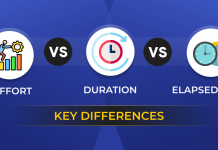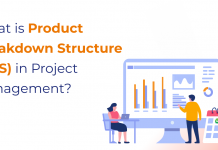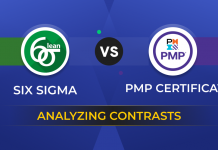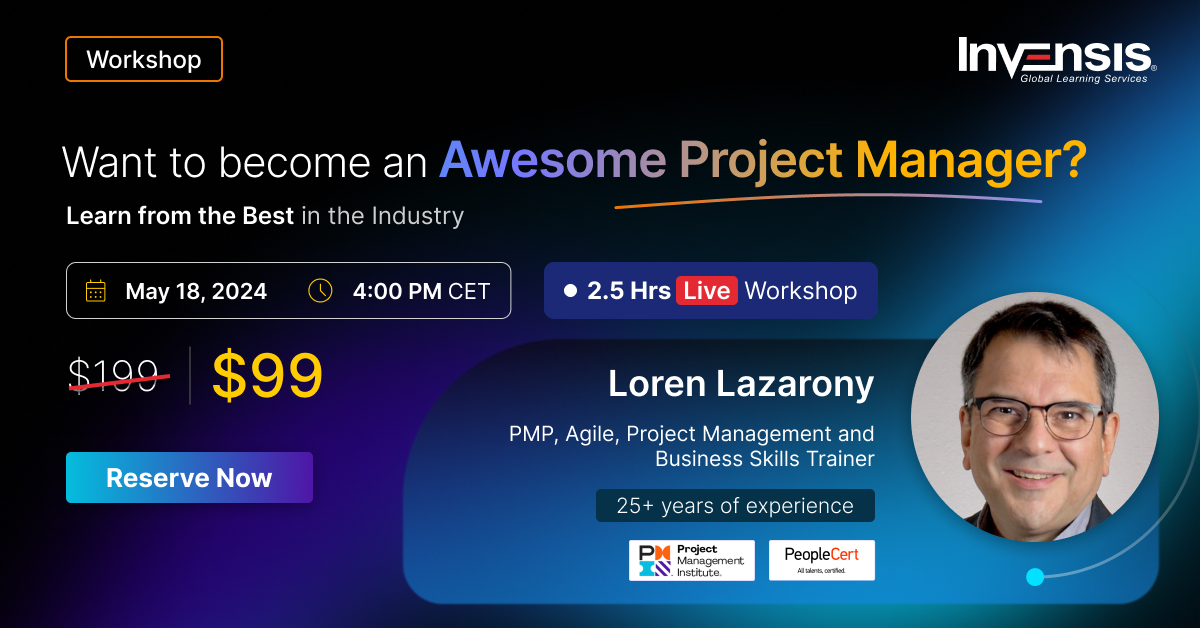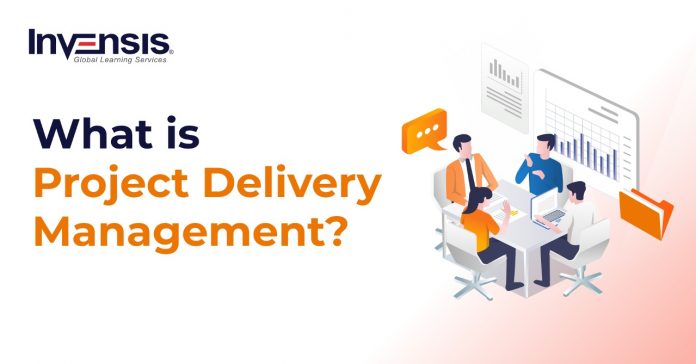
How do successful projects meet ambitious goals effortlessly, stay on track, and deliver value to stakeholders? This is where project delivery management comes into play. This powerful approach guides you through every step of the project lifecycle, from initial planning to successful completion.
But what exactly is project delivery management? Project Delivery Management is the keystone, bridging the gap between strategic planning and seamless execution. It oversees the entire project lifecycle, from planning and execution to delivery and closure, while adhering to schedules, budgets, and stakeholder expectations.
Defining scope, allocating resources, navigating change, and measuring performance are all crucial elements in this intricate choreography.
In this blog article, we will explore the phases and processes of Project Delivery Management, uncovering helpful tips for a successful performance. Let’s delve into the details.
Table of Contents
- What is Project Delivery Management?
- Project Delivery Manager Job Description
- What are Project Delivery Methods?
- Who is Involved in Project Delivery Management?
- Various Phases in Project Delivery Management?
- Tips for Successful Project Delivery Management
- Conclusion
What is Project Delivery Management?
Project Delivery Management (PDM) is a comprehensive process that oversees and coordinates the successful execution of a project from its initiation to closure. It involves the strategic planning, organization, and control of resources and activities to ensure that project goals and objectives are achieved within the specified time, budget, and scope constraints.
This discipline encompasses key elements, including defining the project scope, allocating resources efficiently, implementing change management protocols, and continually measuring and assessing project performance.
Project Delivery Management plays a crucial role in maintaining the project on schedule, within budgetary limits, and meeting stakeholders’ expectations. Successful project delivery management is often characterized by effective communication, risk mitigation, and the ability to adapt to unforeseen challenges.
Professionals in this sector use their skills, expertise, and experience to manage the complexity of project execution, ensuring the organization receives valuable results.
Project Delivery Manager Job Description
A Project Delivery Manager (PDM) is a crucial role in any organization that relies on successful project completion. The primary role revolves around ensuring that projects are delivered on time, within budget, and by the specified scope and quality standards.
Their responsibility typically includes strategic planning, resource management, risk assessment, and effective communication with stakeholders.
Project Delivery Managers work closely with project teams, guiding them through the various stages of the project and facilitating collaboration among team members. They are also responsible for rectifying potential risks, devising mitigation strategies, and adapting to changes to keep the project on track.
Roles and Responsibilities of a Project Delivery Manager:
- Project Planning and Execution: Develops and oversees comprehensive project plans, ensuring alignment with organizational goals and adherence to timelines
- Team Leadership and Management: Leads project teams, allocate tasks, and foster collaboration to maintain a positive and efficient working environment
- Risk Management: Identifies and mitigates potential risks, proactively planning for contingencies to minimize project disruptions
- Issue Resolution: Addresses and resolves project issues promptly, employing a proactive approach to keep the project on track
- Stakeholder Communication: Communicates effectively with stakeholders, providing regular updates, addressing concerns, and managing expectations
- Performance Monitoring and Reporting: Monitors project performance, generates regular reports, and makes data-driven decisions to enhance project outcomes
- Change Management: Navigates changes in project scope or requirements, implementing strategies to integrate adjustments seamlessly
- Quality Assurance: Ensures project deliverables meet quality standards through regular reviews and audits
- Process Improvement: Actively seek opportunities to optimize project management processes, analyzing and implementing improvements for enhanced efficiency
Project delivery managers play a pivotal role in overseeing the entire lifespan of a project, encompassing planning, execution, and successful closure. They are the masterminds behind ensuring projects achieve their goals, remain within budget constraints, and deliver value on time.
PMP certification training provides the ideal platform for individuals aspiring to become effective project delivery managers by equipping them with the skills needed to thrive in this demanding yet rewarding field.
What are Project Delivery Methods?
Project delivery methods refer to the systematic approaches and frameworks employed to plan, design, and execute a project from inception to completion. These methods provide a structured and organized way to manage and deliver projects, taking into account factors such as project complexity, goals, timelines, and the preferences of stakeholders.
Several project delivery methods exist, each with unique characteristics, advantages, and suitability for specific projects.
Some common project delivery methods include:
1. Design-Build (DB)
Design-Build is a project delivery method where a single entity, the design-build team, is responsible for the project’s design and construction phases. This integrated approach fosters collaboration between designers and builders from the project’s inception, potentially streamlining communication, reducing delays, and optimizing overall project efficiency.
Features:
- Single-Point Responsibility: One entity is responsible for both design and construction
- Collaboration: Encourages collaboration between designers and builders from the project’s outset
- Streamlined Communication: Minimizes communication gaps between design and construction teams
- Faster Project Delivery: Typically results in a faster project completion compared to traditional methods
2. Design-Bid-Build (DBB)
The Design-Bid-Build method divides the project into sequential phases: design, bid, and build. The design phase precedes the bidding process, where contractors submit competitive bids based on the completed design.
Once a bid is selected, the construction phase commences. This traditional approach allows for detailed planning but may result in longer project timelines.
Features:
Sequential Phases: Project phases are sequential, starting with design, followed by bidding, and then construction
- Detailed Planning: Allows for detailed planning and specification before construction begins
- Competitive Bidding: Contractors bid on predefined project specifications
- Clear Project Scope: Well-defined project scope and requirements at the outset
3. Construction Management-at-Risk (CMAR)
CMAR involves the early collaboration of the owner, designer, and construction manager. The construction manager is engaged during the design phase and works with the design team to provide input on cost estimates, scheduling, and construction feasibility.
The construction manager then transitions to a traditional contractor role during construction, assuming financial risk for the project’s successful completion.
Features:
- Early Collaboration: Involves the construction manager early in the design phase for collaboration
- Cost Management: The construction manager provides input on cost estimation and constructability
- Risk Management: The construction manager shares project risks and responsibilities with the owner
- Transparency: Offers transparency and flexibility in project delivery
4. Integrated Project Delivery (IPD)
IPD is a collaborative project delivery method that involves the integration of various stakeholders, including designers, contractors, and owners, from the early stages of the project. This method encourages mutual commitment, shared risk and reward, and a focus on maximizing project efficiency and value.
Features:
- Collaborative Approach: All stakeholders collaborate from the project’s early stages
- Shared Risk and Reward: Encourages shared risks and rewards among project participants
- Decision-Making Integration: Integrates decision-making processes among designers, contractors, and owners
- Common Project Goals: Emphasizes achieving common project goals rather than individual objectives
5. Job Order Contracting (JOC)
Job Order Contracting is a procurement method commonly used in construction. It involves the establishment of a long-term contract between an owner and a contractor. The contractor is then authorized to perform a variety of construction projects, often of a repetitive nature, on an as-needed basis.
Features:
- Task Order Contracts: Involves issuing task orders for various projects within a specific contract
- Cost-Effective: Suitable for routine and repetitive construction projects, promoting cost-effectiveness
- Pre-Negotiated Rates: Pre-negotiated unit prices for various tasks streamline the contracting process
- Flexibility: Allows for flexibility in handling multiple, smaller-scale projects
6. Construction Management Multi-Prime (CMMP)
CMMP is an approach where multiple prime contracts are awarded directly to various trade contractors, and a separate construction manager oversees the entire project. This method provides a high degree of specialization and can be beneficial in complex projects where different trade contractors need to work concurrently.
Features:
-
- Multiple Prime Contracts: Involves separate contracts with various prime contractors
- Specialized Contractors: Allows for hiring specialized contractors for different project components
- Increased Control: Owners retain more control over each prime contract
- Complex Coordination: Requires effective coordination among multiple contractors
Who is Involved in Project Delivery Management?
Project Delivery Management involves the collaboration of various stakeholders throughout the project lifecycle to ensure its successful execution. The key participants include:
1. Project Owner
The Project Owner is the individual or organization that initiates and funds the project. They define the project’s objectives, requirements, and overall vision. Project Owners are responsible for approving project plans, managing budgets, and ensuring that the final deliverables align with their expectations.
Their role often extends to decision-making, risk management, and maintaining communication with stakeholders, including designers, contractors, and project managers.
2. Designer
Designers play a pivotal role in the project, translating the project owner’s vision into tangible plans. This role can include architects, engineers, and other design professionals who create the detailed specifications, drawings, and plans for the project.
Designers must consider functional requirements, aesthetic considerations, and compliance with regulations. They work closely with the project owner to ensure the design aligns with the project’s goals and vision.
3. Contractor
Contractors are responsible for the physical execution of the project. This role involves the project’s construction, installation, or implementation according to the specifications outlined by the designer and approved by the project owner.
Contractors manage labor, materials, and equipment to ensure the project is completed on time, within budget, and meets quality standards. They often collaborate with the project owner, designers, and project manager to address challenges and changes during construction.
4. Construction Project Manager
The Construction Project Manager serves as the intermediary between the project owner, designer, and contractor. They are responsible for planning, coordinating, and overseeing all aspects of the construction process.
This includes managing the project schedule, budget, and resources. Construction Project Managers facilitate communication among stakeholders, monitor progress, and address issues that may arise during construction.
They play a critical role in ensuring that the project is delivered successfully and meets the project owner’s expectations in terms of quality, time, and cost.
Various Phases in Project Delivery Management
Project Delivery Management involves a series of distinct phases that collectively guide a project from initiation to successful completion. Each phase has specific tasks, goals, and deliverables, contributing to the overall project’s success. The typical phases in Project Delivery Management include:
1. Planning Phase
The planning phase establishes the groundwork for the entire project. The project’s scope, objectives, timelines, and resource requirements are meticulously defined here. Key tasks include creating a comprehensive project plan, outlining the project’s structure, and developing strategies for risk management, resource allocation, and communication. A well-defined plan sets the stage for successful project execution.
2. Design Phase
In the design phase, the conceptual ideas outlined in the planning stage are translated into detailed plans and specifications. Collaboration among designers, architects, and other professionals results in creating drawings, schematics, and other necessary documentation. This phase ensures that the project’s physical or technological components are thoroughly mapped out before implementation, minimizing uncertainties.
3. Implementation Phase
The implementation phase is where the project plan is put into action. Resources are allocated, and the project team undertakes the physical construction or implementation work. The Construction Project Manager oversees the execution process, ensuring that activities align with the project plan. This phase is characterized by active project work, monitoring progress, and addressing any unforeseen challenges that may arise during the execution of the project.
4. Closure Phase
The closure phase marks the formal completion of the project. Final deliverables are presented to the project owner, and a comprehensive review is conducted to ensure all project objectives are met. Contracts are closed, documentation is finalized, and lessons learned are documented. The Closure phase is crucial for tying up loose ends, verifying the success of the project, and capturing insights for future improvements.
Tips for Successful Project Delivery Management
Successfully navigating Project Delivery Management requires strategic planning, effective communication, and adaptability. Here are some essential tips to enhance project delivery:
1. Developing the Scope Statement
Developing a clear and concise Scope Statement is crucial for project success. This involves defining the project’s objectives, deliverables, constraints, assumptions, and acceptance criteria. A well-defined scope sets the boundaries of the project, providing a foundation for effective planning and execution.
2. Performing Stakeholder Analysis
Stakeholder analysis is the systematic identification and assessment of individuals or groups who have an interest in the project. Understanding stakeholders’ expectations, interests, and influence is vital for effective communication and collaboration. This analysis helps in tailoring project strategies to meet diverse stakeholder needs.
3. Creating and Communicating a Project Plan
A detailed project plan serves as a roadmap, outlining tasks, timelines, dependencies, and resource requirements. Communicating this plan to the project team and stakeholders fosters alignment and clarity. Regular updates ensure everyone is informed of progress and changes, facilitating a unified understanding of project goals.
4. Reviewing the Work Breakdown Structure (WBS)
The Work Breakdown Structure is a hierarchical breakdown of the project into manageable and well-defined tasks. Regularly reviewing the WBS ensures that all project components are identified, tasks are properly organized, and dependencies are accounted for. A well-structured WBS contributes to efficient resource allocation and task management.
5. Maintaining a Record of Actions, Issues, and Risks
Keeping a detailed record of actions, issues, and risks is fundamental for effective project management. This record includes documenting decisions made, tracking progress on tasks, addressing issues as they arise, and managing identified risks. Regularly reviewing this record aids in proactive problem-solving and risk mitigation, contributing to overall project success.
Conclusion
Project delivery management is a complex but rewarding process. By understanding its core principles, exploring different methodologies, and mastering essential tools and techniques, project managers can navigate the challenges and unlock the potential of their projects.
We hope this blog has been your comprehensive guide to project delivery management. Remember, successful project delivery requires a blend of strategic planning, efficient execution, meticulous control, and continuous improvement. Embrace the knowledge you’ve gained, apply the tips and best practices, and embark on your journey to becoming a master of project delivery.
By doing so, you’ll ensure your projects consistently deliver exceptional value, exceeding expectations and leaving a lasting impact.
Elevate your career with Invensis Learning’s top-tier Project Management certification courses, led by industry experts. Our globally recognized certifications and comprehensive curriculum ensure you gain the skills needed for success.
By investing in project management training, you unlock a world of opportunities to enhance your career and contribute to project success across diverse domains.




